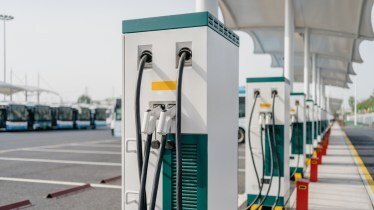The state of adoption of electric vehicles in India is not uniform across the country thanks to a multitude of factors, but the availability of public charging infrastructure could be considered one of the most important factors.
There is no denying that each stakeholder has been striving to do their bit to drive the adoption of electric vehicles. For instance, automakers are introducing newer models, variants, and branding activities to create awareness, while Central and State governments have introduced various incentives and schemes to make owning an EV lucrative. In fact, the government to make charging of EVs cheaper also made several amendments in its Guidelines & Standards for Charging Infrastructure for Electric Vehicles, which was first issued in January 2022. This includes –
- Allowing owners to charge their EV at their residence/offices using their existing electricity connections.
- Prescribing revenue sharing model for provision of land at promotional rates for public charging stations.
- Providing electricity connection to Public Charging Station (PCS) within stipulated timelines.
- Prescribing single-part EV tariff for public charging stations and shall not exceed the Average Cost of Supply (ACoS) till 31.03.2025.
- Specifies a ceiling of Rs 2.50 per unit and Rs 3.50 per unit of electricity used for slow AC charging of EVs at PCS during the solar and non-solar hours respectively. Additionally, a ceiling limit of Rs 10 per unit and Rs 12 per unit of electricity used for DC Fast charging of EVs at PCS during the solar and non-solar hours respectively has also been specified.
- Average cost of supply (ACoS) by DISCOMs to Public Charging Stations (PCSs) during solar hours shall have a rebate of 20% and a surcharge of 20% during all other times.
Maharashtra tops the chart
As per details provided by the Ministry of Power, a total of 12,146 public electric vehicle charging stations were operational across 34 states and UTs in India as on February 2, 2024. This is a jump of 84.42 percent compared to 6,586 public EV chargers operational a year ago.
Of this Maharashtra alone had a lion’s share or 25 percent of the EV chargers, followed by Delhi with 16 percent and Karnataka at 9 percent respectively.
The Union Territories of Diu & Daman and Dadra Nagar Haveli, Lakhsadweep had a charger each.
On the other hand, when one looks at the number of EVs sold in India, in 2023 a total of 15,31,564 electric vehicles (across segments) were registered. In 2022, the number stood at 78,840 EVs sold. Till date, a total of 36,84,478 EVs (across segments) have been registered across the country in India.
This translates to 1 public chargers for every 303 EVs (across segments). Please note that this is just a rough calculation, the ratio does not take into account, chargers installed by EV owners themselves, private EV chargers, and battery swapping networks. In addition, since the split between two-, three-, four-wheeler, e-trucks and e-buses is unavailable, this cannot be taken at face value.
Furthermore, before one jumps to any conclusion or biases toward setting up EV charging infrastructure, it is important to understand that several parameters go into consideration towards the same.
As per, NITI Aayog the charging infrastructure requirement depends upon the composition of electric vehicles, running patterns, terrain & geography, urbanisation pattern, the technology of EVs, and charging equipment.
Since all these factors are still evolving, there is no global consensus on a number of charging points required for a certain number of EVs. The requirement is considered dynamic and in the wide range of 1 Charging Point per 20 EVs to 1 Charging Point per 150 EVs, depending upon the aforementioned factors.
| S. No. | State Name | No. of Operational EV Chargers | % Share |
| 1 | Maharashtra | 3,079 | 25% |
| 2 | Delhi | 1,886 | 16% |
| 3 | Karnataka | 1,041 | 9% |
| 4 | Kerala | 852 | 7% |
| 5 | Tamil Nadu | 643 | 5.29% |
| 6 | Uttar Pradesh | 582 | 4.79% |
| 7 | Rajasthan | 500 | 4.12% |
| 8 | Telangana | 481 | 3.96% |
| 9 | Gujarat | 476 | 3.92% |
| 10 | Haryana | 377 | 3.10% |
| 11 | Madhya Pradesh | 341 | 2.81% |
| 12 | Andhra Pradesh | 327 | 2.69% |
| 13 | West Bengal | 318 | 2.62% |
| 14 | Odisha | 198 | 1.63% |
| 15 | Punjab | 158 | 1.30% |
| 16 | Chhattisgarh | 149 | 1.23% |
| 17 | Jharkhand | 135 | 1.11% |
| 18 | Bihar | 124 | 1.02% |
| 19 | Goa | 113 | 0.93% |
| 20 | Assam | 86 | 0.71% |
| 21 | Uttarakhand | 76 | 0.63% |
| 22 | Jammu & Kashmir | 47 | 0.39% |
| 23 | Himachal Pradesh | 44 | 0.36% |
| 24 | Pondicherry | 23 | 0.19% |
| 25 | Meghalaya | 21 | 0.17% |
| 26 | Tripura | 18 | 0.15% |
| 27 | Manipur | 17 | 0.14% |
| 28 | Chandigarh | 12 | 0.10% |
| 29 | Arunachal Pradesh | 9 | 0.07% |
| 30 | Nagaland | 6 | 0.05% |
| 31 | Andaman & Nicobar | 3 | 0.02% |
| 32 | Sikkim | 2 | 0.02% |
| 33 | D&D and DNH | 1 | 0.01% |
| 34 | Lakshadweep | 1 | 0.01% |
| Total EV Public Chargers | 12,146 | 100% | |
